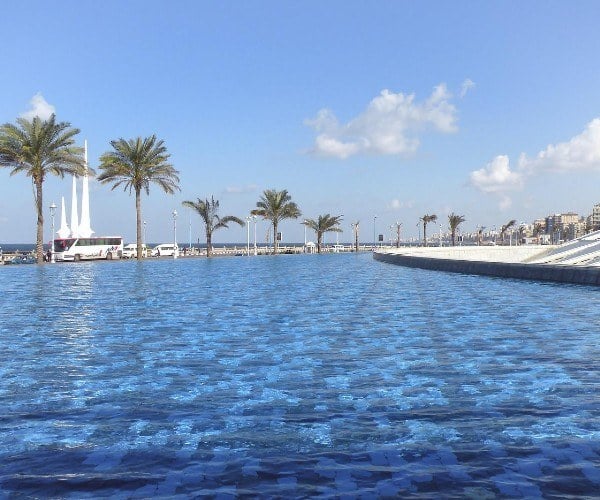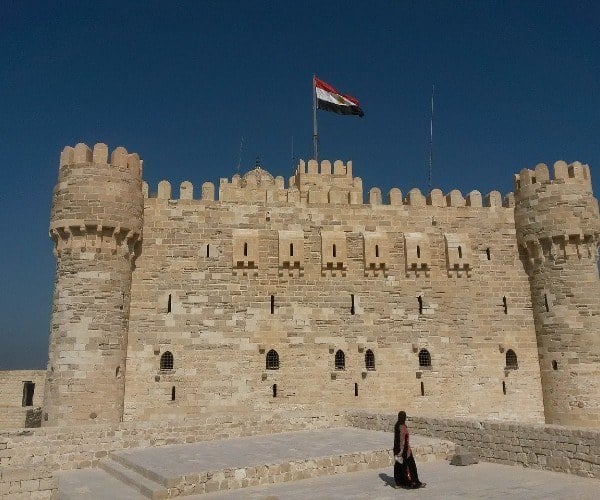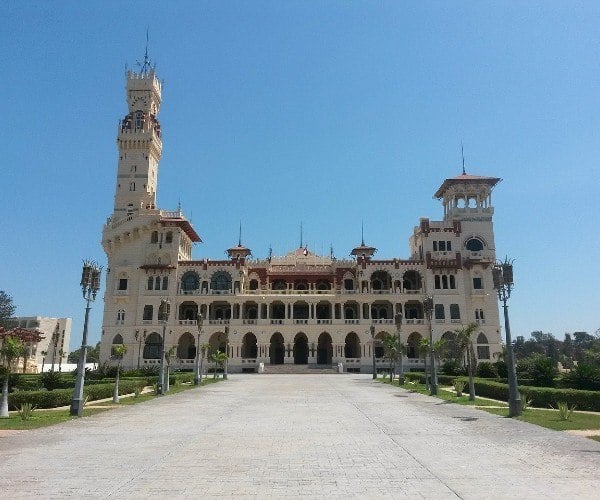Top 5 attractions in Alexandria, the pearl of the Mediterranean
The Pharaonic era and the Islamic era are only two aspects of Egyptian civilization. The time in between was a brilliant Greco-Roman era that lasted for about a thousand years. Travel 180 kilometers north of Cairo to Alexandria in order to catch a glimpse of that time period. At that time in Egyptian history, this city served as the epicenter.
Alexandria, Egypt‘s most significant port and industrial hub is the country’s second-largest city. Its distinct European vibe and more Mediterranean-like temperature set it apart from the rest of Egypt.
When Alexander the Great invaded Egypt in 332 BC, the Pharaonic era came to an end. He also commanded that a new city be constructed here on the Mediterranean coast to serve as the capital of his new imperial possession. He gave the city the name Alexandria, and it developed fast to become one of the most significant towns in the world and Egypt’s capital for about a thousand years. It was also home to two of the Seven Wonders, the largest library in antiquity, and It was a center of academic excellence where people like Euclid, Archimedes, and Aristarchus expanded the boundaries of knowledge in a variety of fields like mathematics, astronomy, physics, and geography. It was the location of Cleopatra, the Ptolemaic monarch whom Julius Caesar and Mark Anthony courted.
1. Library of Alexandria: Bibliotheca Alexandrina
In the heart of Alexandria’s historic district, the Bibliotheca Alexandrina is situated in a splendid position next to the city’s historic harbor. The 11-story library can hold up to 4 million volumes of books, and with the use of compact storage, that number might be increased to 8 million. In addition to the library’s facilities, it also includes a planetarium, a number of museums, a school of information science, and conservation facilities, among other cultural and educational features. The building spans 160 meters in circumference, rises up to 32 meters in height, and descends 12 meters to the ground. It is distinguished by its circular, tilting design. The building is surrounded by an open plaza and a reflecting pool, and a footbridge connects the city to the nearby University of Alexandria.

The new Alexandria Library is a cutting-edge structure that will significantly benefit scholars, academics, and the general public. It was conceived as a rebirth of the ancient library in the city founded by Alexander the Great about 2300 years ago but lost to civilization centuries later. The new library has a classic and striking style. Its enormous circular shape, in conjunction with the circular Alexandrian harbor, evokes the cyclical, ever-evolving nature of knowledge. Its gleaming, slanting roof is reminiscent of the lighthouse in ancient Alexandria and gives the city a new emblem for education and culture.
2. The Roman Amphitheatre of Alexandria in Kom El Dekka
One of the most well-known landmarks in Alexandria is the Roman Amphitheatre. In Egypt. The Roman Amphitheatre of Alexandria is the sole construction of its kind in Egypt, despite the fact that amphitheaters were built all across the Roman Empire, including in Greece, Italy, and Turkey, with numerous instances of these buildings still standing today.
The Roman Amphitheatre that is still standing today in Alexandria was built in the fourth century AD and was a typical building style throughout the Greco-Roman era. During the Roman era in Egypt, amphitheaters were unique roofed theatres constructed to hold poetry contests and musical celebrations.
The amphitheater has a marble audience area that is symmetrical with an expanded wing and has seating for up to 600 people.
Up to the seventh century, the Roman Amphitheatre was still in operation and utilized to stage various artistic events like musical performances and other types of activities. This fact was established by the architectural features of the theatre, which demonstrate that it was in use during the Roman, Byzantine, and Early Islamic periods. Throughout its long history and as it moved through several eras, the amphitheater served a variety of functions. During the Roman era, it served as an odeum where musical performances were presented. The theatre at the time contained all the necessary components for a flawless performance, including the section of the orchestra and the former stage dome.
3. Catacombs of Kom El Shoqafa
The Catacombs of Kom El Shuqafa are Egypt’s largest and most significant burial site, and they are located immediately to the west of Pompey’s Pillar. They originate from the Greco-Roman era. The hill of treasures, also known as Kom El Shuqafa in Arabic, was accidentally discovered at the start of the 20th century.
The Catacombs of Kom El Shuqafa, the most significant Greco-Roman necropolis in Egypt, are decorated with works from Alexandria’s common Roman, Hellenistic, Pharaonic, and ancient Egyptian periods. This necropolis, which dates to the second century AD, was carved out of the rock to a depth of 35meterss (115 feet). There are three levels total, and they are all below ground. The lowest level, however, is currently inaccessible as a result of floods that took place here.
4. The Citadel of Qaitbay
The Citadel of Qaitbay is placed in Alexandria. Additionally, it is a remarkable illustration of historical legacy and architectural beauty in addition to being a monument. It’s an amazing stronghold that has grown to be a significant symbol of Alexandria.

The Citadel of Qaitbay is a stop on practically every tour in Alexandria and provides visitors with breathtaking views of the Mediterranean Sea.
This charming castle was constructed in the fourteenth century by Sultan Qaitbey to protect Alexandria from Ottoman Empire expansion. Since the Ottomans took over Egypt in 1512, their attempts have been futile, but the stronghold has survived, strategically placed on a narrow arm of land that juts out into Alexandria’s harbor from the corniche.
The fortress was not always in its current configuration. Around the turn of the 20th century, it was reconstructed after suffering significant damage during the British bombardment of Alexandria during a nationalist rebellion against British hegemony in 1882.
IMPORTANT NOTICE:
If you are reading this article anywhere other than on A Luxury Travel Blog, then the chances are that this content has been stolen without permission.
Please make a note of the web address above and contact A Luxury Travel Blog to advise them of this issue.
Thank you for your help in combatting content theft.
5. The Montazah Palace Gardens
On Egypt’s northern coast, on the eastern edges of Alexandria, are the Montaza Palace Gardens. The complex, which spans over 360 acres, is a lovely location that looks out onto Al Montaza Gulf. Additionally, there are five swimming beaches within the complex: Aida, Cleopatra, Vanessa, Semiramis, and the Helnan Palestine Hotel’s private beach.

Montaza offers a wide variety of enjoyable activities. Taking a boat ride to view the gardens from the water is a fantastic choice. Waterskiing, diving, snorkeling, or even just lounging by the seaside are all fantastic marine pursuits.
A great variety of trees and plants, some of them rather uncommon, may be found in the garden of Al Montazah, which is 3000 meters wide. Despite having been planted more than 75 years ago, several tropical plants are still in good condition. The Montazah plant collection includes Catania, enormous boots, Zamia, Carlota, and unique varieties of palms. This is in addition to the large-sized plants like Ropilia, Anthurium, Hokiry, Araliaceae, and Victoria.
Plan your trip to Alexandria, and don’t forget to visit all the mentioned places above, in addition to others such as the National Museum, Abu Al-Abbas Al-Mursi Mosque, Pompey’s Pillar, and many more. Check out our Alexandria enjoyable program, so you won’t miss out on any spectacular places.
Sherif Khalil is Owner of Dunes & Beyond. Dunes & Beyond offers luxury tours, Nile cruises and desert safaris in Egypt.
If you would like to be a guest blogger on A Luxury Travel Blog in order to raise your profile, please contact us.
Did you enjoy this article?
Receive similar content direct to your inbox.


Looking back on our last trip to Egypt we regret not planning a trip to Alexandria. One of the couples in our hotel was very enthusiastic about the city.
Not sure if you’re talking about going on a day trip from Cairo. From our experience a few days staying in Alexandria is time we’ll spent.
As a librarian it’s brilliant to see a library topping a list of things to do.
Alexandria is a wonderful destination in Egypt. It was a bit out of the way for me, but I’m glad I visited it. I loved the mix of colonial architecture and ancient Roman sites. Plus, the cafes were lovely!
This piece is a real eye opener. Alexandria really wasn’t on my radar at all.